Building Back Better: Toward a disability-inclusive, accessible, and sustainable post COVID-19 world
Some people with disabilities have severe illness from the virus that causes COVID-19 due to underlying medical conditions, if they live in a group setting, or because of systemic health and social inequities. CDC recommends that all people age 5 and older receive a COVID-19 vaccine. Adults with disabilities are less likely to report hesitancy about getting vaccinated; yet, are more likely to report experiencing difficulties obtaining a COVID-19 vaccine than adults without a disability. It is critical to ensure that people with disabilities are able to access COVID-19 vaccines to keep themselves and their loved ones safe.
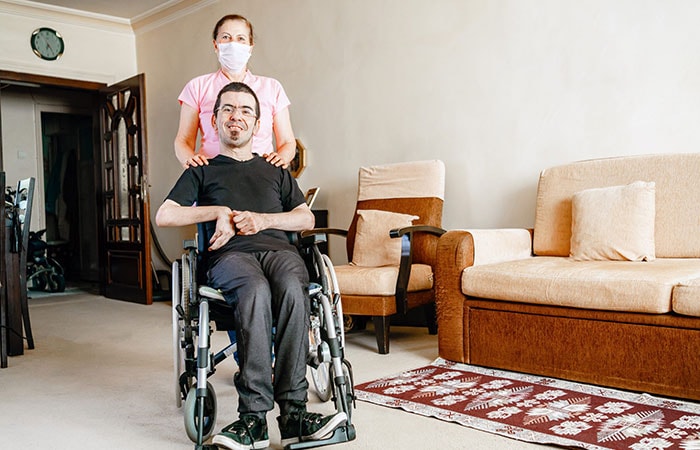
December 3 is International Day of Persons with Disabilities. In the United States, 1 in 4 adults has a disability.1 Many people will experience a disability at some point during their lives. Disabilities may include difficulty with walking or climbing stairs; hearing; seeing; or concentrating, remembering, or making decisions.
Although the term “people with disabilities” sometimes refers to a single population, this is a diverse group of people with a wide range of needs and abilities. Two people with the same type of disability can be affected in very different ways. Some disabilities may be hidden or not easy to see.
Many Adults with Disabilities Report Difficulty Getting Vaccinated
A recent CDC study found that adults with disabilities were more likely than adults without a disability to report difficulty getting vaccinated against COVID-19.2 Among unvaccinated adults, those with a disability were more likely than were those without a disability to report challenges such as:
- Getting an appointment online,
- Not knowing where to get vaccinated,
- Getting to vaccination sites, and
- Vaccination sites not being open at convenient times2
Health disparities are differences (also known as disparities) in health and access to services. Addressing these barriers to COVID-19 vaccination for people with disabilities can help reduce health disparities, increase COVID-19 vaccination demand, and increase the number of people with disabilities who get the COVID-19 vaccine.
COVID-19 Materials for People with Intellectual and Developmental Disabilities and Care Providers
People with intellectual and developmental disabilities (IDD) face unique challenges and are more likely to get very sick from COVID-19. Throughout the COVID-19 pandemic, parents, family members, and caregivers have been working hard to help the people they care for stay healthy and safe during this difficult time.
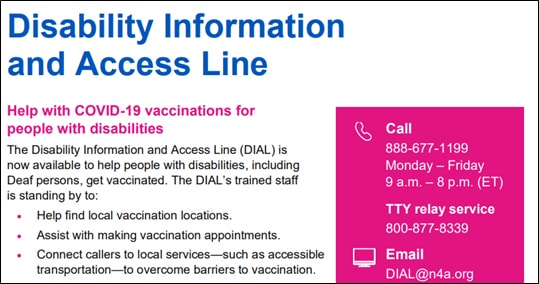
- COVID-19 Materials for People with Intellectual and Developmental Disabilities and Care Providers. COVID-19 is challenging to explain, live through, and communicate about. CDC created the materials on this page in English and in Spanish to help make communicating about COVID-19 a little easier.
- Talking About COVID-19: Tips for Parents, Family Members, and Caregivers. The aim of these materials is to help caregivers talk with their loved ones with IDD about what to expect when getting a COVID-19 vaccine or test and how to stay safe if they are not fully vaccinated.
- Strategies for Reaching People with Limited Access to COVID-19 Vaccines. Practices that can help reach populations who might need help accessing COVID-19 vaccination.
- Guidance for Direct Service Providers. What do care providers for people with disabilities need to know about COVID-19?
- COVID-19 Vaccine Disability Information and Access Line (DIAL). DIAL is now available to help people with disabilities, including deaf persons, get vaccinated. The DIAL’s trained staff is standing by to help with COVID-19 vaccinations for people with disabilities.
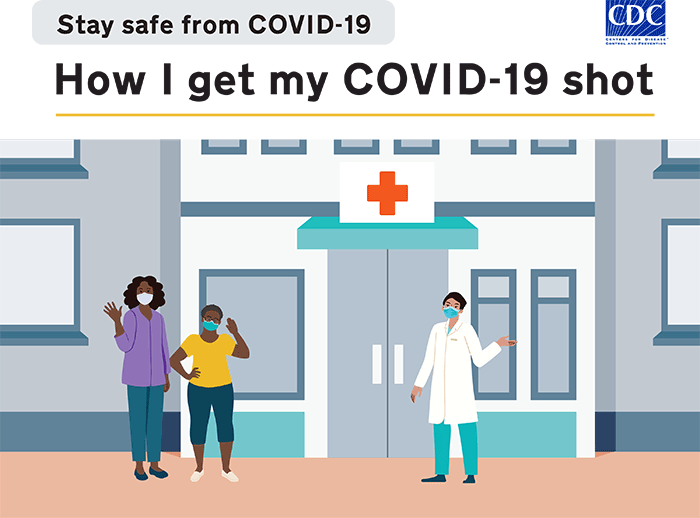
This social story follows Izzy as she gets her COVID-19 shot.
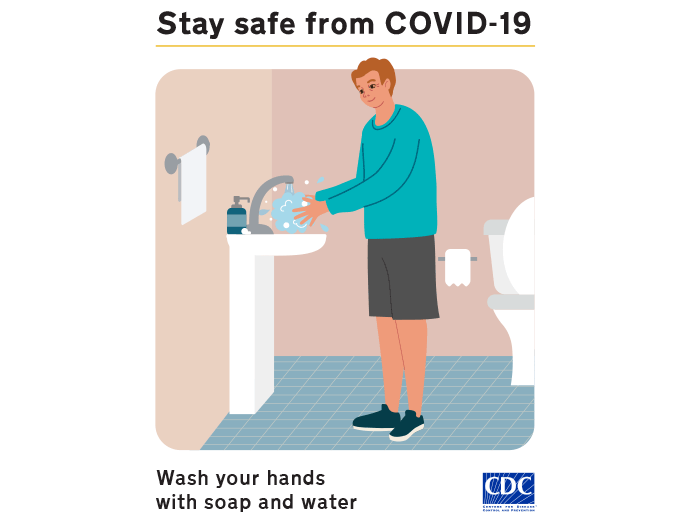
This poster reminds people to wash their hands to stay safe from COVID-19.
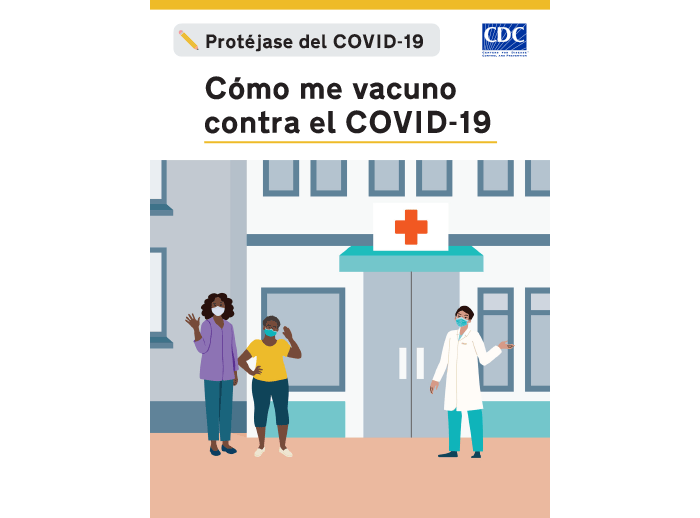
Esta historia social interactiva utiliza opciones de llenar el espacio en blanco y selección múltiple para ayudario a prepararse para la vacuna contra el COVID-19.
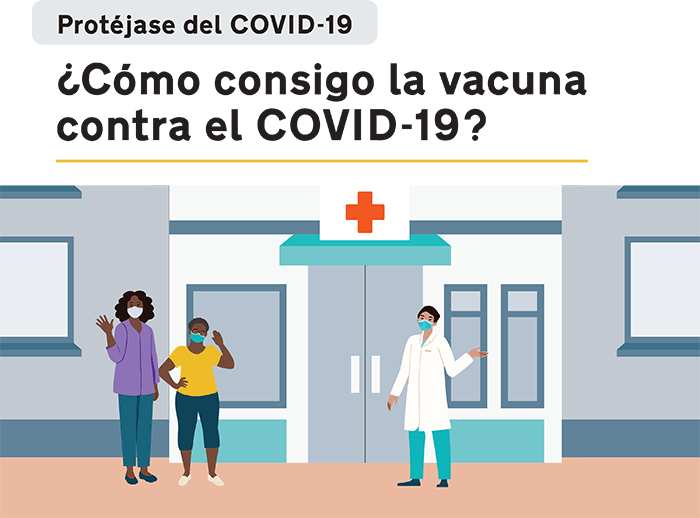
Esta historia social le hace seguimiento a Izzy cuando va a vacunarse contra el COVID-19.
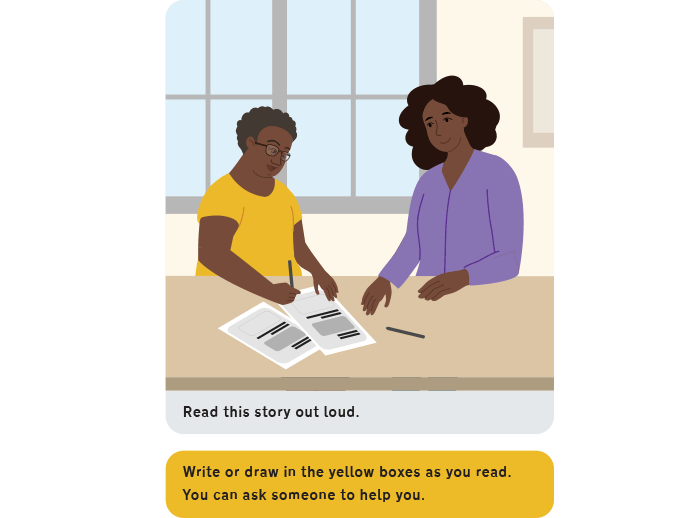
This interactive social story uses fill-in-the-blanks and multiple choice options to help you prepare for getting a COVID-19 shot.
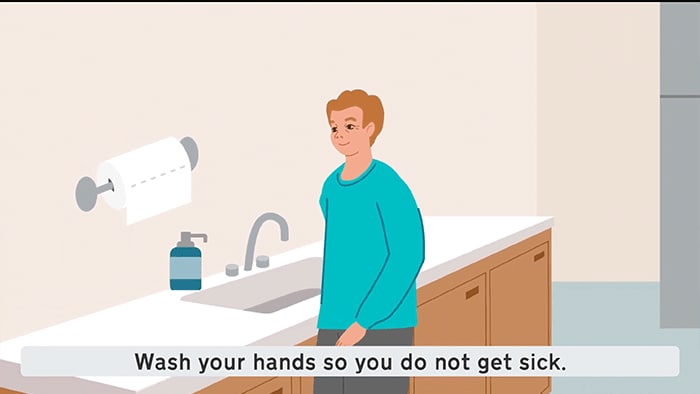
This video shows how to stay safe from COVID-19 by washing hands.
Additional Disability and COVID-19 Resources
During the COVID-19 pandemic, isolation, disconnection, disrupted routines, and diminished health services have greatly impacted the lives and mental well-being of people with disabilities.3
Everyone reacts differently to stressful situations. How one responds to stressful situations, such as the COVID-19 pandemic, can depend on their background, support systems (e.g., family or friends), financial situation, health and emotional background, the community they live in, and many other factors.
People with disabilities or developmental delays may respond strongly to the stress of a crisis, particularly if they are also at higher risk for serious illness from COVID-19 (for example, older people and people of any age with certain underlying medical conditions).
Public health efforts that make COVID-19 vaccination information, scheduling, and sites more easily accessible for persons with disabilities might help to address health inequities and increase vaccination demand and coverage. 2 These efforts include:
- Making health messages and vaccination information available in ASL, braille, and easy-to-read formats,
- Making all vaccination sites more accessible to persons of all ability types, including persons with intellectual disabilities and sensory disabilities, and
- Making COVID-19 vaccination available to those who are unable to leave their homes easily or independently.
These efforts would be relevant to the reduction of health disparities related to disability beyond the COVID-19 pandemic. 2
It helps to stay positive and remind yourself of your strengths. Visit How Right Now for inspiration and resources to find what helps.
Call your healthcare provider if stress gets in the way of your daily activities for several days in a row. Free and confidential resources can also help you or a loved one connect with a skilled, trained counselor in your area.
This December, CDC honors International Day of Persons with Disabilities. Everyone can be a part of the global movement to change attitudes toward, and promote the inclusion of, people with disabilities.
References
- Okoro CA, Hollis ND, Cyrus AC, Griffin-Blake S. Prevalence of Disabilities and Health Care Access by Disability Status and Type Among Adults — United States, 2016. MMWR Morb Mortal Wkly Rep. 2018;67:882–887. https://www.cdc.gov/mmwr/volumes/67/wr/mm6732a3.htm
- A. Blythe Ryerson, PhD1; Catherine E. Rice, PhD1; Mei-Chuan Hung, PhD, et al (2021). Disparities in COVID-19 Vaccination Status, Intent, and Perceived Access for Noninstitutionalized Adults, by Disability Status – National Immunization Survey Adult COVID Module, United States, May 30–June 26, 2021. MMWR Morb Mortal Wkly Rep. 2021; 70(39);1365-1371. https://www.cdc.gov/mmwr/volumes/70/wr/mm7039a2.htm?s_cid=mm7039a2_w
- International Day of People with Disabilities. Accessed November 17, 2020. https://idpwd.org/
